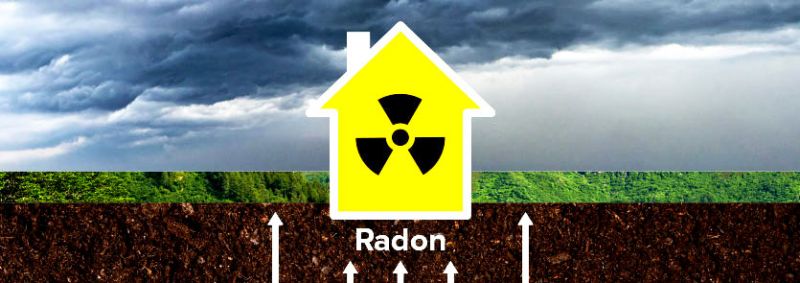Jeff Green | Aug 30, 2019
In response to a study by Kingston Frontenac Lennox and Addington Public Health (KFL&APH), the South Frontenac building department has made changes to its building permits force builders to provide for radon mitigation in all new homes.
“The regulations that we are bringing are taken directly from the Ontario Building Code. They apply in a few parts of the province where there are a high percentage of homes with radon levels above the Canadian standard of 200 bequerelles per cubic metre. Now that Public Health has released their survey that shows how common it is the region, all of the building departments are responding,” said Tom Berriault, the Chief Building Official for South Frontenac.
Berriault said that other jurisdictions have, or will be, bringing in similar measures in short order. New home builders will have three potential options to follow.
Berriault said that he recommends the third option, which includes the installation of a soil gas pipe and an “active, sub-slab depressurization system”. With these measured in place, radon testing is voluntary once the home is built, but Berriault said that it is higly advisable that testing is done.
“Because testing needs to be done during the heating season, and takes 90 days, we recommend that everyone test their home after they move in. If they have radon levels above the limit, and they have followed option 3, all they would have to do is install a fan to vent the gas through the pre-installed pile,” he said.
“We have been recommending these measures in new home construction for years, as a precautionary measure, but often people don’t know anything about radon or the risks it causes,” said Berriault.
The new soil gas mitigation program, which has been posted to the South Frontenac Township website (southfrontenac.net) only addresses new home construction.
“Once a house is built and we have issued an occupancy permit, there is nothing more we can do,” said Berriault.
He said that KFL&A Public Health is considering holding a public information session in South Frontenac in the fall, on the health risks posed by radon and mitigation measures that can be taken to lower radon levels below both the Canadian standard of 200 bcg/m³ and the World Health Organisation level of 100 bcg/m³.
KFL&A Public Health will be making radon testing kits available in November at a discounted price of $20. They need to be left in location, at the lowest elevation where a homes’ residents spend four hours or more a day, for three months, and then returned to Public Health to be read. The results will be reported back to the homeowner, but will not be kept by Public Health.
Radon is an odorless, colourless and tasteless gas which is formed naturally by the radioactive breakdown of uranium contained in soil and rock. Under normal circumstances it mixes with the air when it escapes from the ground and poses no risk. However, when it enters a closed space such as a building, it can accumulate to higher concentrations. It is the second leading cause of lung cancer behind smoking, and the risk associated with radon exposure over a long period of time is significantly higher among smokers and former smokers than non-smokers.
“It costs up to $3,000 from local licensed contractors to fix the problem, I’ve been told” said Berriault.
The KFL&A Public Health’s Radon Testing Study, which was released in July, found that over half of the over 1,000 homes that were tested in the region, had levels of radon above the World Health Organisation (WHO) guideline level, and over a fifth, (21.3%) tested above the more lenient Health Canada Guidelines. In the South Frontenac and Frontenac Islands sampling area, the numbers were higher (68.1%) over the WHO level and 35.8% above the Health Canada level). In North Frontenac, Central Frontenac and Addington Highlands the results were 54.3% above the WHO level and 34.3% above the Health Canada level.
In their response, South Frontenac township referred only to the levels reported for the entire KFL&A Public Health catchment area.
“You can slice up statistics in many ways, so we only looked at the largest sampling area when making our decision about how to respond,” Berriault said, “it was enough to trigger the soil gas mitigation provisions in the building code, which will be in place for all new construction in South Frontenac as of September 1st
More Stories
- September Closures for Northbrook And Sharbot Lake Beer Stores
- This "Doc Is Not In Anymore" After 54 Years
- Mazinaw Lake Swim Program Only Getting Stronger After 53 Years
- "Jack of Diamonds, Jack of Diamonds" but No Ace Of Spades Yet
- Sydenham Legion Presents ATV to Canada Day Raffle Winner
- Bathing in Blue Mindfulness: An Otter Lake Journey in Frontenac Park
- Central Frontenac Buys Used Pumper At Special Meeting
- 4th Annual Sharbot Lake Beach Bash
- Frontenac ATV Club Rallies For A Community Cause
- Harrowsmith Shadowdale Blooms: Kindness In Full Colour

